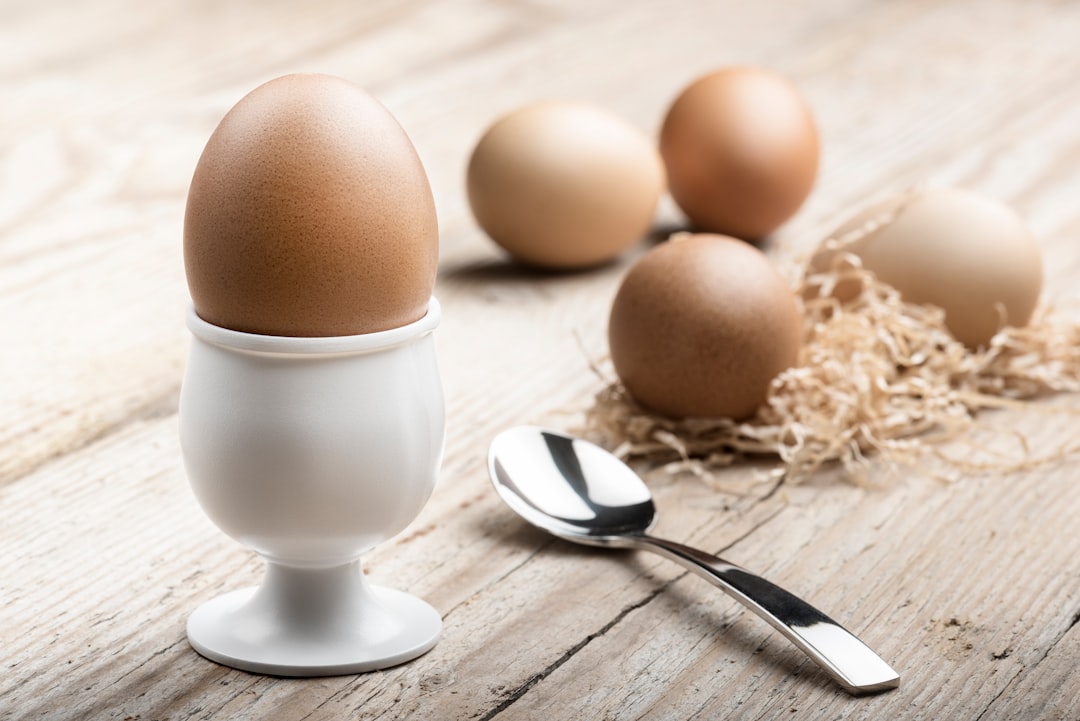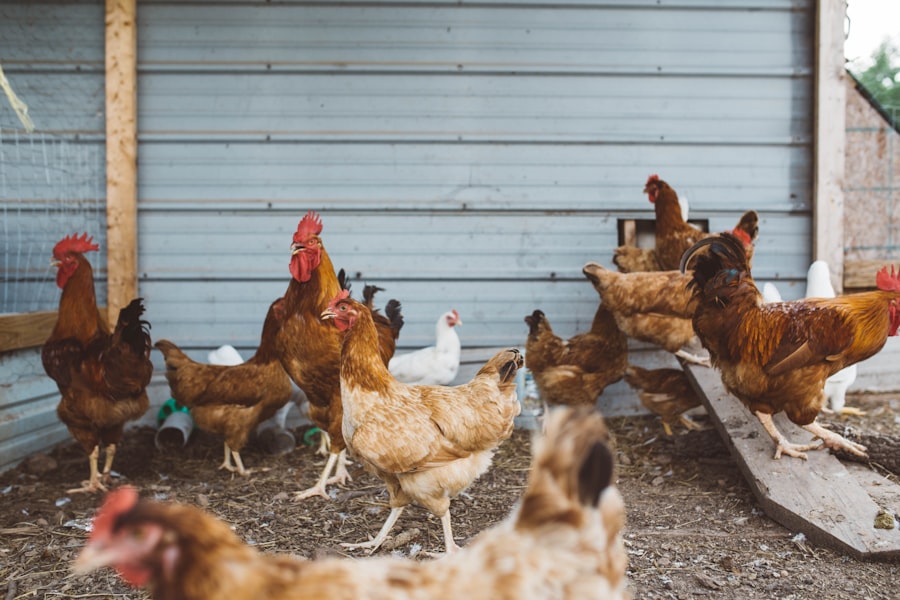Chicken Egg Laying Frequency: How Often Do They Lay?

Egg laying frequency is a crucial aspect of chicken farming. It determines the productivity and profitability of a poultry operation. The ability to consistently produce a high number of eggs is essential for commercial egg producers, as well as for backyard chicken keepers who rely on their hens for a steady supply of fresh eggs.
The frequency at which chickens lay eggs can vary significantly among individuals and is influenced by various factors. Understanding these factors and their impact on egg laying frequency is essential for poultry farmers to optimize production and ensure the health and well-being of their flock.
Key Takeaways
- Chicken egg laying frequency is an important factor in poultry farming.
- Factors such as breed, age, season, and nutrition can affect egg laying frequency.
- Understanding the chicken reproductive system is crucial in maintaining optimal egg production.
- Different chicken breeds have varying egg laying frequencies.
- Age and seasonal variations can impact egg laying frequency, but there are ways to increase it through proper care and management.
Factors Affecting Chicken Egg Laying Frequency
Several factors can affect the egg laying frequency of chickens. One of the most significant factors is age. Young hens typically start laying eggs around 5-6 months of age, and their egg production gradually increases until they reach peak production at around 1-2 years old. After that, egg production tends to decline gradually.
Breed also plays a role in egg laying frequency. Some chicken breeds are known for their high egg production, while others are more suited for meat production. Breeds such as Leghorns and Rhode Island Reds are known for their excellent egg-laying abilities, while heritage breeds like Orpingtons and Brahmas tend to lay fewer eggs.
Nutrition is another critical factor that affects egg laying frequency. Hens require a balanced diet with adequate levels of protein, vitamins, minerals, and calcium to support optimal egg production. A deficiency in any of these nutrients can lead to reduced egg production or poor-quality eggs.
Lighting also plays a significant role in regulating egg laying frequency. Chickens require a certain amount of light each day to stimulate their reproductive system and trigger egg production. Artificial lighting can be used to supplement natural daylight during the shorter days of winter, ensuring that hens continue to lay eggs consistently throughout the year.
Stress is another factor that can impact egg laying frequency. Chickens that are subjected to stressful conditions, such as overcrowding, extreme temperatures, or predator threats, may experience a decrease in egg production. It is essential to provide a calm and comfortable environment for chickens to maintain optimal egg laying frequency.
Understanding the Chicken Reproductive System
To understand egg laying frequency, it is crucial to have a basic understanding of the chicken reproductive system. Chickens have a unique reproductive system that allows them to lay eggs regularly.
The reproductive system of a chicken consists of the ovary, oviduct, and cloaca. The ovary is responsible for producing eggs, while the oviduct is where the eggs develop and receive their shell. The cloaca is the opening through which eggs are laid.
The process of egg production is regulated by hormones. The pituitary gland in the chicken’s brain releases follicle-stimulating hormone (FSH), which stimulates the development of follicles in the ovary. These follicles contain the yolks that will eventually become eggs.
Once a yolk reaches maturity, it is released from the ovary and enters the oviduct. As it travels through the oviduct, various structures add albumen (egg white), membranes, and finally, the shell. The fully formed egg then moves into the cloaca and is laid.
How Often Do Chickens Lay Eggs?
| Chicken Breed | Average Egg Laying Frequency |
|---|---|
| Leghorn | 280-320 eggs per year |
| Rhode Island Red | 250-300 eggs per year |
| Plymouth Rock | 200-250 eggs per year |
| Wyandotte | 180-220 eggs per year |
| Sussex | 250-300 eggs per year |
The average egg laying frequency for chickens varies depending on several factors, including breed and age. On average, a healthy hen will lay an egg every 24-26 hours. This means that she will lay approximately 5-7 eggs per week.
However, it is important to note that egg laying frequency changes over time. Young hens typically start with irregular egg production before settling into a more consistent laying pattern. As they reach peak production at around 1-2 years old, they may lay an egg almost every day. After that, egg production gradually declines.
Egg Laying Frequency of Different Chicken Breeds
Different chicken breeds have different egg laying capabilities. Some breeds are known for their high egg production, while others are more suited for meat production. When selecting chicken breeds for egg production, it is essential to consider their average egg laying frequency.
Breeds such as Leghorns, Rhode Island Reds, and Sussex are known for their excellent egg-laying abilities. Leghorns, in particular, are renowned for their high egg production and can lay up to 300-320 eggs per year. Rhode Island Reds and Sussex can also lay a respectable number of eggs, averaging around 200-250 eggs per year.
On the other hand, heritage breeds like Orpingtons and Brahmas tend to lay fewer eggs. They are more valued for their meat quality and docile temperament than for their egg production. These breeds typically lay around 150-200 eggs per year.
The Impact of Age on Egg Laying Frequency

Age is a significant factor that affects egg laying frequency in chickens. Young hens typically start laying eggs around 5-6 months of age, but their egg production may be irregular at first. As they mature, their reproductive system becomes more developed, and they begin to lay eggs more consistently.
Hens reach peak egg production at around 1-2 years old. During this time, they may lay an egg almost every day or every other day. However, as hens age, their egg production gradually declines. By the time they reach 3-4 years old, they may only lay a few eggs per week.
There are exceptions to this general pattern, as some hens may continue to lay well into their older years. However, it is common for older hens to experience a decline in egg laying frequency.
Seasonal Variations in Chicken Egg Laying Frequency
Seasonal changes can also affect egg laying frequency in chickens. As the days get shorter in the fall and winter, chickens receive less natural daylight, which can disrupt their reproductive cycle and reduce egg production.
To manage egg production during the shorter days of winter, artificial lighting can be used to supplement natural daylight. By providing a few extra hours of light each day, chickens can continue to lay eggs consistently throughout the year.
It is important to note that some chicken breeds are more affected by seasonal changes than others. Breeds that are more closely related to wild jungle fowl, such as game birds and some heritage breeds, may experience a more significant decrease in egg production during the winter months.
How to Increase Egg Laying Frequency in Chickens
There are several strategies that poultry farmers can employ to increase egg laying frequency in chickens. One of the most important factors is providing proper nutrition. Hens require a balanced diet with adequate levels of protein, vitamins, minerals, and calcium to support optimal egg production. Feeding a high-quality layer feed that is specifically formulated for egg-laying hens can help ensure that they receive all the necessary nutrients.
Managing lighting is another crucial aspect of increasing egg laying frequency. Providing a consistent light source for 14-16 hours per day can help stimulate the reproductive system and encourage hens to lay eggs regularly. This can be achieved by using artificial lighting during the shorter days of winter or by ensuring that the coop has adequate natural daylight.
Reducing stress is also essential for maintaining optimal egg laying frequency. Chickens that are subjected to stressful conditions, such as overcrowding, extreme temperatures, or predator threats, may experience a decrease in egg production. Providing a calm and comfortable environment for chickens, along with proper ventilation and protection from predators, can help reduce stress and promote consistent egg laying.
Common Egg Laying Problems and Solutions
While most chickens lay eggs without any issues, there are some common problems that can affect egg laying frequency. One of these problems is egg binding, which occurs when an egg gets stuck in the oviduct and cannot be laid. This can be a life-threatening condition for hens and requires immediate veterinary attention. To prevent egg binding, it is important to provide hens with a calcium supplement, such as crushed oyster shells, to ensure that they have enough calcium to form strong eggshells.
Another common problem is the production of soft-shelled eggs or eggs with thin shells. This can be caused by a calcium deficiency or by stress. Providing hens with a calcium supplement and ensuring that they have a calm and comfortable environment can help prevent this problem.
Maintaining Optimal Egg Laying Frequency in Chickens
In conclusion, egg laying frequency is a crucial aspect of chicken farming. Understanding the factors that affect egg laying frequency and how to manage them is essential for poultry farmers to optimize production and ensure the health and well-being of their flock.
Factors such as age, breed, nutrition, lighting, and stress all play a role in determining how often chickens lay eggs. By providing proper nutrition, managing lighting, reducing stress, and addressing any potential health issues, poultry farmers can increase egg laying frequency and maintain a consistent supply of fresh eggs.
Maintaining optimal egg laying frequency not only ensures the profitability of a poultry operation but also contributes to the overall welfare of the chickens. By providing a suitable environment and meeting their nutritional needs, farmers can support their hens’ natural reproductive cycle and promote healthy egg production.
If you’re curious about how often chickens can lay eggs, you might find this article on Lawn World’s website quite informative. It delves into the factors that influence a chicken’s egg-laying frequency, such as breed, age, and environmental conditions. Understanding these factors can help you optimize your chicken’s egg production and ensure their overall well-being. To learn more, check out the article here.
FAQs
What is the average lifespan of a chicken?
The average lifespan of a chicken is around 5-10 years, depending on the breed and living conditions.
At what age do chickens start laying eggs?
Chickens typically start laying eggs at around 5-6 months of age, although this can vary depending on the breed.
How often can chickens lay eggs?
Chickens can lay eggs every 24-26 hours, although this can vary depending on the breed, age, and living conditions.
Do chickens lay eggs year-round?
Most chickens will lay eggs year-round, although some breeds may slow down or stop laying during the winter months.
How many eggs can a chicken lay in a week?
On average, a chicken can lay 4-5 eggs per week, although this can vary depending on the breed and living conditions.
Can chickens lay eggs without a rooster?
Yes, chickens can lay eggs without a rooster. However, the eggs will not be fertilized and will not hatch into chicks.



